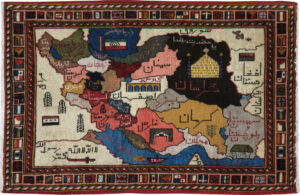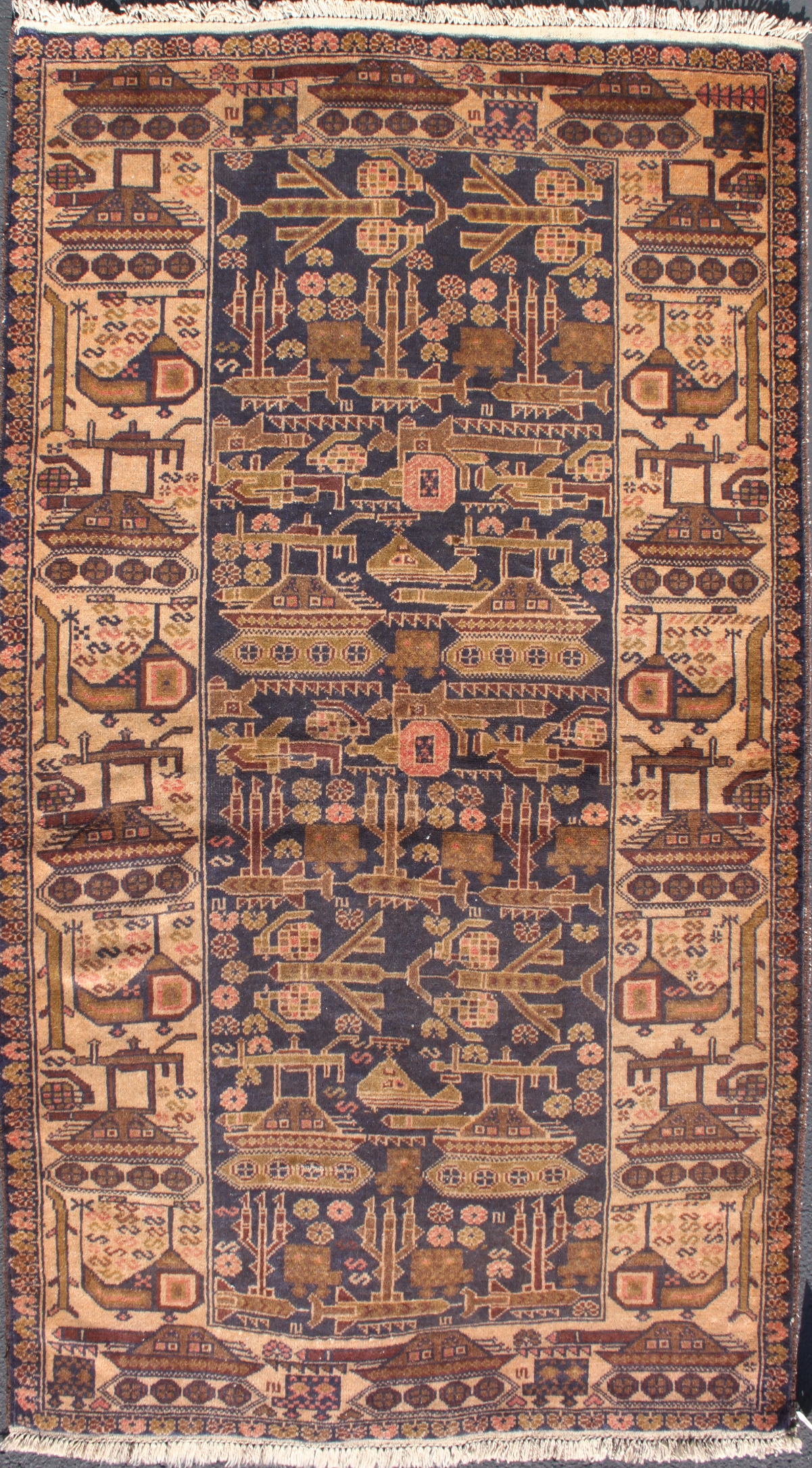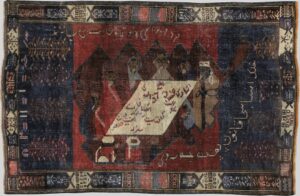Here is a map rug reminiscent of the early Iraq maps especially this great beauty of a silk iraq rug (more info about province rugs like these Iraq rugs or these Iraq rugs from 2003 or these map rugs with and without provinces), but this rug is apparently Iranian. It shows Iran with its provinces outlined and colored like the Iraq rugs (and Afghan map rugs). The oil wells in Iraq are a nice touch. If only Nigel Lendon were here to discuss this.
A friend is selling this rug so contact Warrug for the details.

 The figures and motifs are pixelated and stylized. The different rows of weapons are separated by jagged lines. The border is made up of alternating tanks, rifles, and helicopters. The flowery guard stripe on the left side of the rug appears to be stretched compared to the stripe on the right. This rug can be found on
The figures and motifs are pixelated and stylized. The different rows of weapons are separated by jagged lines. The border is made up of alternating tanks, rifles, and helicopters. The flowery guard stripe on the left side of the rug appears to be stretched compared to the stripe on the right. This rug can be found on 
